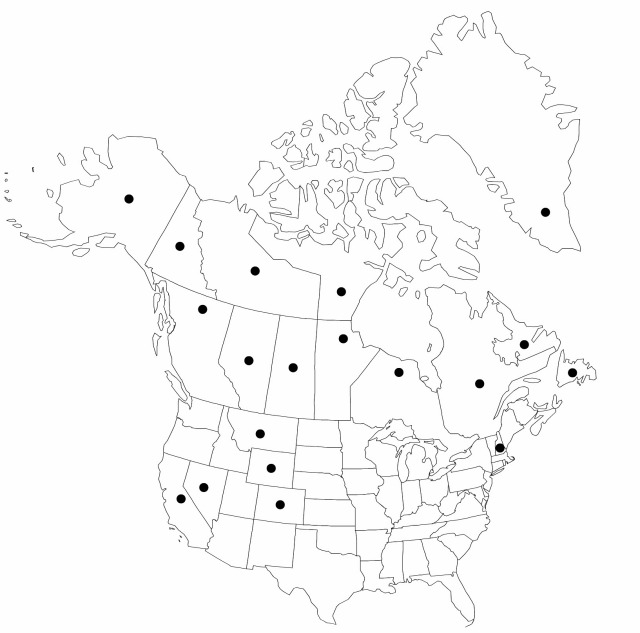Carex capitata
Syst. Nat. ed. 10, 2: 1261. 1759.
Pistillate scales ovate, as long as or much shorter than the perigynia, margins narrowly or broadly hyaline. Perigynia 2–4 × 1.5–1.8 mm, distal margins smooth; beak smooth or sparingly serrulate. 2n = 50.
Phenology: Fruiting Jul–Aug.
Habitat: Mires and heaths of the boreal forest with disjunct occurrences southward in the alpine zone of eastern and western mountain ranges, primarily on calcareous substrates
Elevation: 20–3400 m
Distribution

Greenland, Alta., B.C., Man., Nfld. and Labr., N.W.T., Nunavut, Ont., Que., Sask., Yukon, Alaska, Calif., Colo., Mont., Nev., N.H., Wyo., Mexico, South America, Eurasia.
Discussion
A. Cronquist (1969) placed Carex capitata in Utah; the species is not listed by B. J. Albee et al. (1988), nor have specimens been seen from there.
In Scandinavia (L. Reinhammar 1999) and Russia (T. V. Egorova 1999), Carex arctogena is distinguished from C. capitata on ecologic and morphologic grounds and also by allozymes at the rank of species. In North America the distinctions are not clear; two taxa can be observed, but there are also numerous specimens of uncertain determination. When making new collections, it is important to evaluate the differences seen elsewhere and to pay close attention to habitat and habit (see below). Separate status at some rank may be appropriate for the taxon “arctogena” in North America too. If C. antarctogena Roivainen from Tierra del Fuego is placed within C. capitata as D. M. Moore and A. O. Chater (1971) and D. M. Moore (1983) have done, then the species occurs at both the northern and the southern extremes of the Americas.
Carex capitata and C. arctogena differ in habitat (boreal mires versus alpine heaths), habit (mat-forming versus tufted), and morphology of the pistillate scales (much shorter and narrower than perigynia and with narrow hyaline margins versus as long as perigynia and with broad hyaline margins) and perigynia (beak gradually formed and smooth versus beak and may be sparingly serrulate).
Selected References
None.
